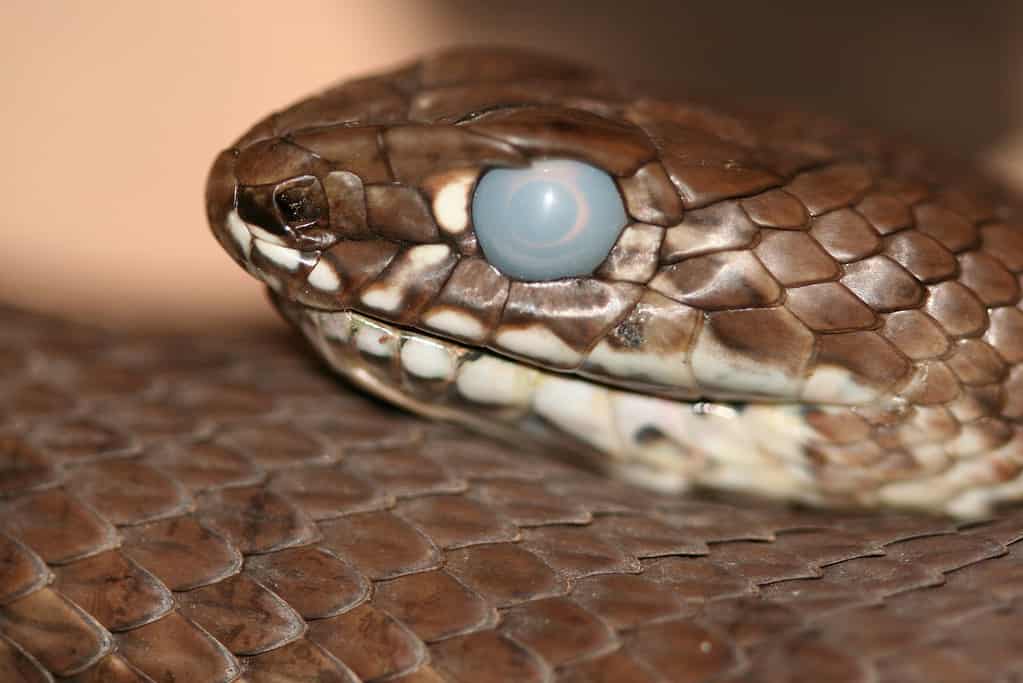Snakes are true predators; equipped with sharp fangs, a powerful body, and keen senses, it almost seems like they are the perfect hunting machines. They have to have some flaws… right? In short, most snakes have only limited vision capabilities. What they may lack in sight, they sure make up for in power and stealth. Their unique yet specifically-adapted traits show how animals are full of evolutionary trade-offs!
Today, we will discuss whether snakes can see, and how good their eyesight is. We will also take a peek at some other tactics they use to navigate the world around them!
Do Snakes Have Good Vision?
Generally speaking, most snakes don’t have particularly good eyesight. Researchers have found that snakes can only see two primary colors in contrast to the three that most humans can see! Most snakes use their other senses to make more fine-tuned observations.
It has also been found that snakes have eyes that are uniquely developed to their specific hunting styles. It has been discovered that day-hunting snakes often have a special UV-filter layer over their eyes. This layer both acts to protect against UV radiation and to produce a clearer image. Thus, day-hunting snakes tend to have better vision in terms of image clarity. In contrast, night-hunting snakes don’t have this UV filter, which allows them to see better at night when UV radiation is the most dominant!
How Do Snakes Sense the World Around Them?

Having different ways to perceive the world around them is important. This is especially true when they shed, which can often impact their vision for a few days!
©Frank Buchter/iStock via Getty Images
You may be wondering how exactly they perceive the world around them. Keep reading to learn more about the other senses that snakes use to be successful in their environment.
Basic Sight
While snakes don’t have amazing eyesight, they still can use their “regular” vision quite a lot. They have the ability to see some color, movement, and light/dark contrast, which is essential for surviving in the wild.
Infrared “Vision” and Temperature
One interesting ability that most snakes boast is the ability to detect infrared radiation and temperature. They have a special organ known as the pit organ which acts as an antenna for picking up infrared and thermal radiation.
It is currently not well-known how snakes process this information. We currently know that snakes can detect thermal and infrared changes, but we aren’t sure how the information is conducted and relayed through the brain. Current thinking suggests that they possibly have neural connections that create visual stimuli, almost like a heat map in addition to the snake’s regular vision. In any case, this ability is incredibly important for snakes, as a lot of their prey are warm-blooded, meaning they are easily trackable with heat!
Scent

Snake tongues act to trap and push scent molecules into their mouths!
©Natalia Kuzmina/Shutterstock.com
Snakes also have a fairly keen sense of smell. Like humans, they have special tissues that can uptake scent molecules and translate those into neural signals. They are slightly different however in the fact that their scent receptors are on the roof of their mouths.
It is common to see snakes flick their tongue around the air. This conspicuous behavior is meant to suck up scent molecules from the air around them.
Vibration
Snakes are generally sensitive to vibrational stimuli as well. Since they are so low to the ground, they are usually able to feel incredibly small things, such as prey running away in the distance. While it isn’t necessarily a very honed sense, it is something that snakes can use to get a better picture of their surroundings, which is crucial when you are hunting for prey and keeping an eye out for predators!
The photo featured at the top of this post is © Geoff Gallice / CC BY 2.0 – License / Original
Discover the "Monster" Snake 5X Bigger than an Anaconda
Every day A-Z Animals sends out some of the most incredible facts in the world from our free newsletter. Want to discover the 10 most beautiful snakes in the world, a "snake island" where you're never more than 3 feet from danger, or a "monster" snake 5X larger than an anaconda? Then sign up right now and you'll start receiving our daily newsletter absolutely free.
Thank you for reading! Have some feedback for us? Contact the AZ Animals editorial team.







